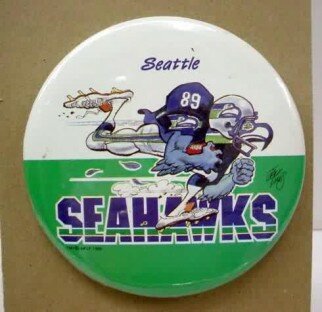
In the promotional video for Disney’s Aladdin (now through July 31 at the 5th Avenue Theatre; tickets), actor James Monroe Iglehart, who plays Genie in the new stage musical says, “Come expecting the movie, but come expecting a brand new vision of Aladdin.” He’s mostly correct in setting that expectation. Aladdin is a hugely entertaining musical that is tailor-made for fans of the Disney film.
Casting was pretty much dead-on. As Aladdin, Adam Jacobs couldn’t look more like his animated counterpart. With a smile you can see from space and a warm, rich voice, he was just as he should be. In one of the songs that didn’t make it into the original film, “Proud of Your Boy,” he shows off an impressive range with the ability to emotionally engage the audience.
As the classic Disney villain Jafar, Jonathan Freeman ate up scenery. Freeman provided the voice for Jafar in the original film, and it’s hard to imagine anyone doing it better. He does every British-accented bad guy from Ming the Merciless to Voldemort proud, with most perfect “evil plan laugh” on the planet.
But the no-contest, don’t-even-bother-to-pan-over-the-faces-of-the-other-nominees award for scene stealing goes to James Monroe Iglehart for his performance of Genie. This actor is a one-man big production number. He had a lot to live up to, given Robin Williams’ performance in the film. Iglehart brings his own voice to the character, while still following the fast-talking, accent-switching, pop culture reference-dropping example of Williams. What impressed me the most, though, was this guy’s seemingly limitless supply of charisma and energy. Iglehart isn’t, um, built like a gymnast, but his cartwheels and pure physicality gave you the impression that this is a guy could will himself to do just about anything on stage. While I’d recommend the production as a whole, it would be worth seeing just for Iglehart’s performance.
The stage musical stays very true to the movie in many ways, with some interesting tweaks. Some of the songs originally written for and eventually cut from the film are given a second chance in this production. The same is true for some of the characters as well. The trio of Aladdin’s friends dropped from the original movie–Babkak, Omar, and Kassim–are restored in the stage musical and serve as sort of a Greek chorus to move the story along. The tweaks are just enough to give fans of the film a reason to see the stage production, but they aren’t going to make 9-year-olds cry foul about any inconsistencies with the movie version.
This production is slick, and you can see how Disney could easily scale it up for a big Broadway theatre, or scale it down for a theme park or cruise ship version. It is, like so many things they do so well, extendable across multiple platforms.
Only a few things didn’t quite work for me. I thought the “Hey, we know we’re in a play” self-referential humor was hit a bit too hard throughout the production. When Babkak acknowledges his Greek chorus role (“That’s right, we’re a device.”), it’s cute. But then that sort of thing got old for me. Maybe kids love it, though. Courtney Reed as Jasmine looked perfect, but she didn’t have the belty voice of the Disney film princesses.
In this production, nothing offends, nothing challenges. There’s no real jeopardy, no surprises, since most of the audience has seen the movie (likely many, many times, if they have kids). But not every play should be Death of a Salesman. Sometimes you just want to be entertained, and this production does just that.










